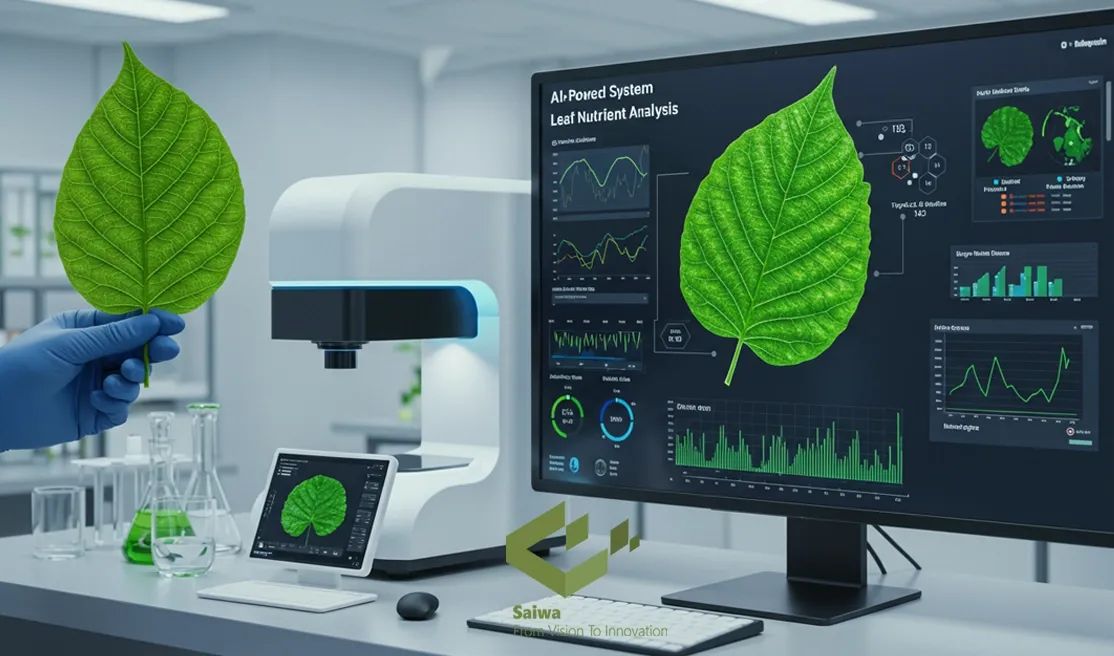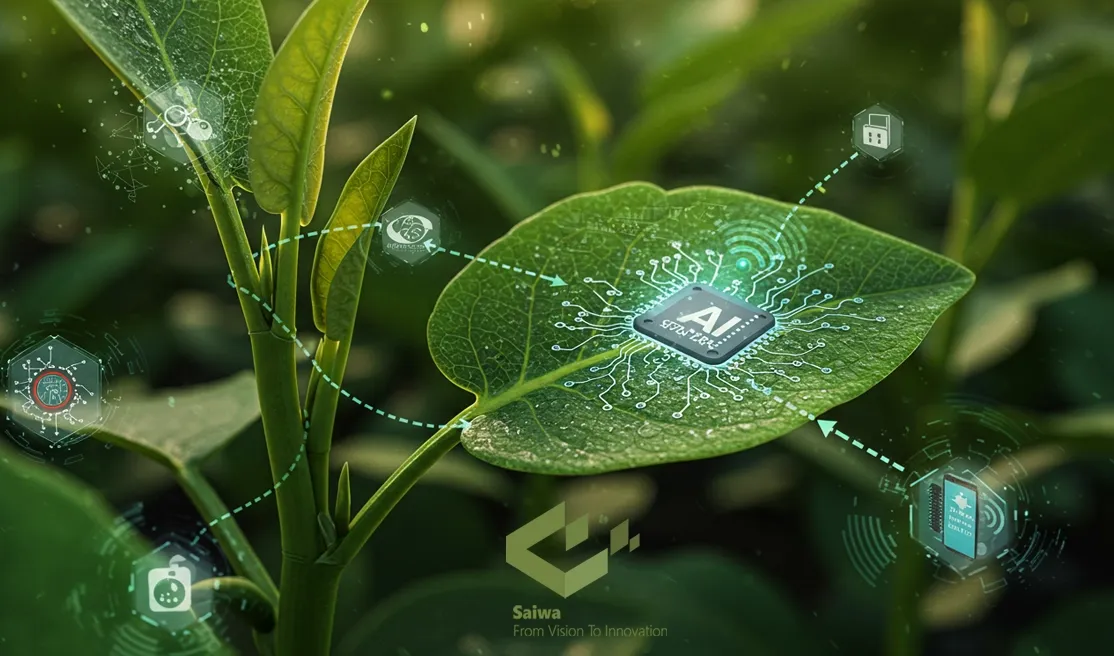
Leaf Nutrient Analysis | Unlocking Plant Health with Precision
Importance of Leaf Nutrient Analysis in Modern Agriculture
Managing crop nutrition effectively is a cornerstone of modern agriculture, requires more than just soil testing. While soil tests reveal what nutrients are available, they don't show what the plant has actually absorbed. This is where Leaf Nutrient Analysis provides a decisive advantage.
By offering a direct snapshot of a plant’s internal nutrient status, it uncovers hidden deficiencies before they impact growth and yield. This level of precision is now amplified by advanced platforms like Saiwa’s Sairone, which uses AI and drone imagery to elevate diagnostics from the lab to the entire field.
This article explores the science, methods, and future of leaf analysis, demonstrating how data-driven insights are unlocking superior plant health.
The Science Behind Leaf Nutrient Analysis
Understanding the diagnostic power of leaves starts with the fundamentals of plant physiology. This process can be broken down into two essential functions:
Nutrient Uptake in Plants: Nutrients are absorbed from the soil by roots and transported via the plant’s vascular system.
Role of Leaves in Nutrient Storage and Transport: Leaves act as the primary centers for metabolism, making their tissue composition a direct indicator of the plant’s nutritional health.
Methods of Leaf Nutrient Analysis
Historically, growers have relied on two primary approaches for assessing nutrient levels. We explore these methods below:
Traditional Laboratory Techniques:
Lab analysis provides precise, quantitative data through established procedures. These include:
Dry Ashing and Wet Digestion Procedures: Preparing leaf samples by breaking them down with heat or acid.
Colorimetric and Titrimetric Analyses: Classic chemical methods to measure nutrient concentrations.
Atomic Absorption Spectroscopy (AAS): A highly accurate method for quantifying specific mineral elements.
Visual Deficiency Symptom Identification:
This field-based approach relies on expert observation of visible cues:
Common Changes in Leaf Color and Shape: Identifying issues like yellowing (chlorosis), purpling, or distorted growth.
Nutrient-Specific Deficiency Indicators: Recognizing distinct patterns, such as chlorosis in new vs. old leaves to pinpoint the specific missing nutrient.

Best Practices for Leaf Sampling
The reliability of any analysis depends entirely on the quality of the sample collected. To ensure accuracy, the following practices are crucial:
Optimal Timing for Sampling: Collecting tissue during key physiological growth stages.
Proper Sampling Techniques: Gathering recently matured leaves from multiple plants to create a representative sample.
Handling and Transporting Samples: Protecting samples from contamination and degradation during transit.
Integrating Leaf Nutrient Analysis in Nutrient Management
Integrating analysis results into a nutrient management plan is where data becomes action. This information enables targeted fertilizer applications, optimizing crop yield estimation and minimizing environmental runoff by preventing over-application.
Cutting-Edge Technologies Revolutionizing Leaf Nutrient Analysis
Today, technology is profoundly reshaping this field. These advancements are shifting Leaf Nutrient Analysis from a delayed, lab-based task to a rapid, in-field science. Several key technologies are driving this change:
Remote Sensing with Hyperspectral and Multispectral Imaging
Utilizing drone and satellite-mounted sensors to capture specific light wavelengths reflected from plants, revealing chemical composition and stress levels remotely.
IoT-Integrated Sensor Networks and Data Analytics
Deploying in-field sensors that continuously collect and stream data on soil moisture, nutrient levels, and plant conditions for immediate analysis.
AI and Machine Learning–Driven Nutrient Predictions
Applying intelligent algorithms to process vast datasets from sensors, allowing them to identify complex patterns and accurately predict nutrient deficiencies.
Drone and LiDAR-Based Precision Monitoring
Leveraging drones for rapid visual assessment of vast areas, combined with LiDAR technology to create detailed 3D maps of crop structure and density.
Data-Driven Decision-Making Platforms
Integrating all incoming data into sophisticated software that translates complex metrics into clear, actionable insights and management recommendations for growers.

Sairone’s Smart Solutions for Precise Leaf Nutrient Analysis
Saiwa’s Sairone platform sits at the apex of this technological revolution. It leverages AI to automate the analysis of drone imagery, providing powerful insights for Plant health Monitoring.
By translating complex visual data into clear, actionable maps, Sairone empowers growers and agronomists to identify nutrient stress, weed detection, and manage interventions with unparalleled precision. This tool moves producers beyond simple problem-solving, enabling a proactive and highly efficient approach to crop management.
Conclusion
The evolution of leaf analysis from reactive lab testing to a proactive, data-driven science marks a pivotal moment in agriculture. By integrating AI and advanced remote sensing, growers can now manage crop nutrition with incredible detail and foresight. This paradigm shift not only maximizes farm profitability but also champions a more sustainable, efficient, and resilient food production system for the future.
Note: Some visuals on this blog post were generated using AI tools.
